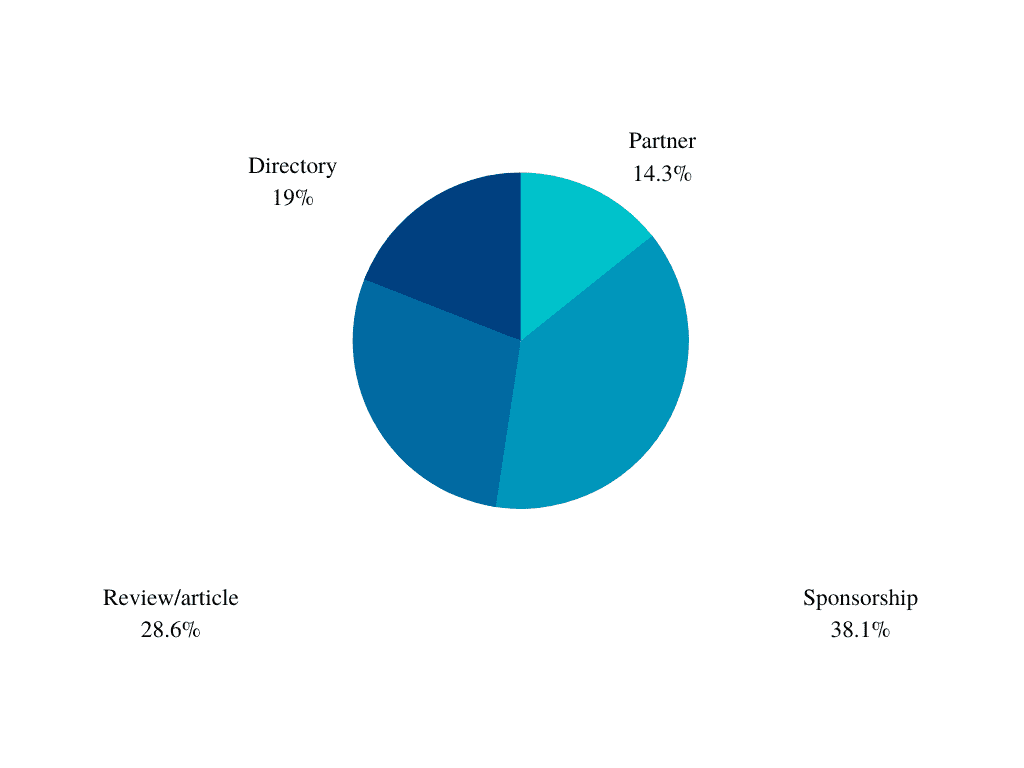In an age when commerce, socialization, news, and countless other industries operate on the internet, most big brands and large companies have developed websites and digital marketing strategies to attract new clients and maintain relationships with existing ones. More and more people are shopping online – it is estimated that, worldwide, people will spend up to $4.8 trillion online in 2023, and 30% of internet users between 16 and 64 believe they will shop online rather than in brick and mortar stores beyond 2020.
Not only are big brands generally favored over small brands in organic rankings, they are also investing billions in digital marketing in order to keep up with demand and stay relevant as commerce across industries evolves. Since link building is an important part of digital marketing, most larger brands that work with marketing professionals have robust link profiles. By taking a look at these link profiles that work for large, successful businesses, small business owners can adapt their own strategies to copy what’s already working and make themselves look like a big player.
What Are Link Profiles?
A link profile is a collection of links that direct to your site and the anchor texts of those links. Link building is a part of most digital marketing strategies that works to bring visitors to your website. Strong backlinks are an important part of SEO and promoting your site’s rankings on search engines like Google. In order to have a strong link profile, your inbound links need to be high quality and relevant. They need to come from authoritative, legitimate sources, rather than spammy websites. The anchor text, or the clickable text of a link, should include keywords or brand names, which provide information to search engines about where the link leads. Essentially, a link profile is all of the links that direct to your site.
When it comes to link profiles, it’s about quality, not quantity. It’s important to have a lot of links back to your site, but they need to be strategically placed and formatted. Your link profile also needs to be built over time – earning too many too quickly can raise a red flag and lead to a penalty from the search engine.
Domain Authority
The higher the domain authority of a linking site, the more valuable that link is. For example, Facebook has an extremely high domain authority of 96. It’s pretty much expected that a company will have a Facebook business page, considering the fact that Facebook is one of the most frequently visited social media platforms worldwide.
Case Study
We compared link profiles of big businesses within 10 non-geographically-based industries – Nordstrom, Purina, Sephora, NordVPN, Geico, Fashion Nova, Bath and Body Works, Sur La Table, The North Face, and Starbucks – in an effort to determine what makes a strong link profile.
Among the links we sampled from the profiles of these 10 major brands, we found that the majority came from sponsorship content. Reviews and articles were a close second, followed by directory websites, such as coupon catalogues, and partnerships.
Partnerships
The highest-performing link for each of these brands was generally another highly recognizable brand. For example, Purina, a popular pet food brand, receives the highest amount of link traffic through a partnership with the cooking show The Pioneer Woman. Their brand, which is primarily focused on recipes and cookware, is a logical partnership for a company like Purina, which is owned by Nestlé, a food brand. Looking for similar brands to your own or within the same industry is a good strategy if you are looking to enter into a partnership. These brands don’t need to be competitors, necessarily, but should have similar or the same target audiences. The North Face is partnered with a smaller athleticwear brand called Sawtooth Outfitters, for example, which benefits from the association with a larger, widely trusted brand.
Reviews and Articles
We also found that these link profiles tend to be made up of articles and reviews of their products. Sephora and Fashion Nova, for example, generate a large amount of traffic from review articles written by bloggers and publications with significant readership. They partner with influencers, sending them products in exchange for honest reviews and other forms of content. It’s important to meet your customers where they are. A person who is interested in cosmetics is more likely to view blogs with that focus or to look for product reviews written by bloggers or publications. Forging strategic partnerships with reviewers can be mutually beneficial, especially since people often read consumer reviews before making a purchase decision.
Directories
Consumers will often check directories, or compendiums of products and websites within a certain category, when shopping online. We found that many of the sites in this case study were listed in directories of coupons and promo codes, as well as lists of products by category. For example, Sur La Table receives traffic from directories of coupon codes for various cookware products that they sell. If you sell products online, offering coupon codes or special deals and making sure you are listed in various directories is a good way to contribute to your link profile. Make sure your coupon codes are accurate and useable, and that your links don’t appear spammy.
Sponsorships
The most common result we discovered in our study is that many large brands invest in sponsored ads on other sites. NordVPN, for example, received a large amount of traffic from ad space purchased on YouTube. They also work with content creators, sponsoring videos made by users with large followings of people who may have an interest in cybersecurity. Geico also receives a large amount of traffic from sponsorships – their highest-performing links are through Sundance Film Festival’s website, and the sponsor various sports teams. While sponsorships are perhaps not the most cost-effective method, they are extremely useful when it comes to generating website leads and ultimately increasing your revenue.
In Conclusion
While big brands, like the ones we looked at in our case study, can afford to invest a lot of their budgets into advertising, it is possible for organizations of all sizes to create a diverse, high-quality link profile that mimics theirs. Consider who you want to market to, and make sure your links are available to them. This can be done through mutually beneficial partnerships with other brands, as well as sponsorships, making sure you are listed in internet directories, and encouraging content creators to generate reviews or articles that mention your products. Having a mix of different types of links in your profile will help increase your brand’s reach and broaden your audience, which will ultimately lead to higher website traffic and increased revenue.


